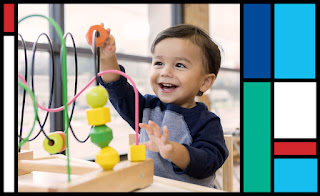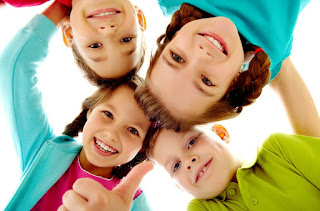MOTOR DEVELOPMENT IN CHILDREN & FACTORS AFFECTING IT.
Motor Development -
Motor development refers to the development of a child's bones, muscles and his / her ability to move around and manipulate his / her environment. In simple words, motor development means the development of various motor abilities from birth till death. In other words comma motor development in the progressive change in the movement throughout one's life.
Motor development can be divided into two types as stated below:
1. Gross Motor Development - It involves the development of large muscles in the child's body specially while setting, walking, running, climbing, etc.
2. Fine Motor Development - It involves the small muscles of the body, especially during the small moments on the fingers and hands. For example, holding of Javelin, discuss and Pole, catching a cricket ball, smashing a volleyball, gymnastic exercises with or without apparatus, etc.
Motor Development in Children -:
Motor development in children can be studied effectively under the following three stages of childhood :
1. Early childhood (3 to 6 years)
2. Middle childhood (7 to 10 years)
3. Late childhood (11 to 12 years)
A. Early Childhood -
The period of early childhood starts from 3rd year and continues till 6th year. The motor development during this period takes place rapidly. This is taste is also known as the preschool years. In this period, a child becomes perfect in various fundamental movements such as running, jumping, throwing and acquire the ability to unite or combine these moments. During this period, competitions should be avoided even with the child of their own age.
B. Middle Childhood -
The period of middle childhood starts from 7th year and continues upto 10th year. During this period common children become active and agile full stop their strong desire to engage in various physical movements and activities. During this period, children have a desire to compete with children of their own age group for stock they also have an urge to improve upon their previous performance. During this period, most of the children achievement patterns of fundamental Motor skills. Their posture and balance become better. During this period, rules should be flexible, instructions time should be short and there should be minimum competitions full stop stress should be given on movement correction.
C. Late Childhood -
The period of late childhood begins from 11 year and continues upto 12th year or till the beginning of the puberty. Strength begins to differ but the differences are small. Boys and girls are able to complete evenly. Most of the children master most intricate or complex Motor skills. They are ready to learn strategies and more complex play combinations all stop running and jumping movements, qualitatively as well as quantitatively developed at a faster rate than in the middle childhood period. Coaches or teachers of physical education should continue to encourage skill development with an increasing stress on strategies and tactics.
Factors Affecting Motor Development -:
There are various factors which are liable to affect motor development in children. This factors are stated below:
A. Biological Factors -
Biological factors are related to the genes. These factors are also known as hereditary or genetic factors. The genes which you get from our parents are responsible for various types of development including motor development. The percentage of fast twitch fibres and slow twitch fibres depends on biological factors. In fact, these factors are likely to affect the rate and ability of motor development. These factors are related to body weight, size and strength.
B. Environmental Factors -
Environmental factors suggest physical and social factors are likely to affect the motor development of children. Research studies indicate that motor development takes place at a faster rate in children who are encouraged to explore their surroundings. They are given more opportunities to take part in sports activities. Those children, who are not encouraged or motivated towards motor activities have low rate of motor development.
C. Nutrition -
Nutrition is also liable to affect the motor development. Indeed, nutritious food promotes good motor development. Sensory motor development is dependent upon nutrition. If children get nutritious food they become stronger with ultimately leads to good motor development. On the other hand, if children do not get proper nutrition they are found to be less energetic and going to this then motor development takes place slowly.
D. Physical Activities -
Taking part in regular physical activities and hence is the motor development at a faster rate. However, the physical activities must be according to the capabilities of children. Motor development becomes slow in those children, who do not take part in physical activities regularly. Not doing even minor physical activities results in delayed motor development in children.
E. Opportunities -
It is a well-known fact that children who made ample opportunities to do more and more physical activities or motor activities are likely to have better motor development. In fact, opportunities to participate in motor activities give a better chance for developing sensory motor abilities. Is proper opportunities are not given to children, then motor development can not take place in those children properly on motor development will be slow in such children.
F. Obesity -
Umesh city and being overweight have a negative effect on the motor development of children. It means that children who are overweight or obese are not enthusiastic to do any motor activity and may even feel uncomfortable to do it. Motor development in such children takes place slowly. Searches and take more time to perform motor movement.
G. Postural Deformities -
Postural deformities in children definitely affect their motor development ful stop any postural deformity such as spinal curvature deformities, flat foot, knock knees, etc., creates hindrances obstacles in the path of motor development of children. In the absence of postural deformities, motor development in children takes place at a faster rate.
H. Sensory Impairments -
Sensory impairments such as visual impairments, hearing impairments, etc., are likely to affect the motor development in children. Due to hearing impairments, following instruction about any type of motor activity becomes more difficult. In the same way, visual impairments also slow down the process of motor development. So, it can be concluded that if there are no sensory impairment in children, then they will have better motor development.
Thankyou for visiting







Comments